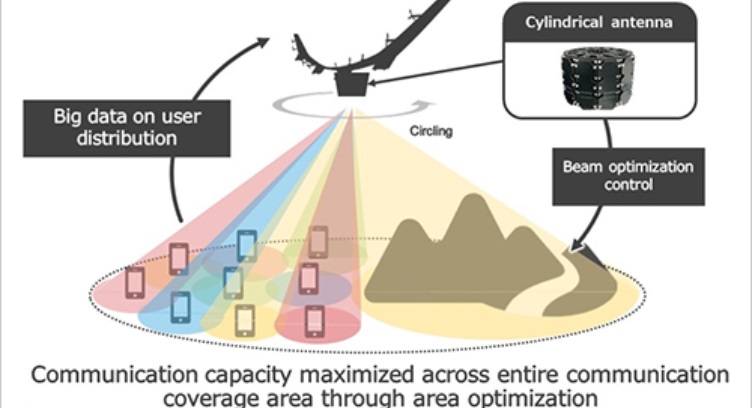SoftBank announced that in September 2023 it successfully conducted a field trial using its cylindrical antenna for High Altitude Platform Station (HAPS) stratospheric-based wireless communication systems at Hokkaido Spaceport, Taiki Town, Hokkaido, Japan.
The trial successfully verified coverage area optimization technology that maximizes communication capacity across an entire communication area covered by HAPS. The field trial utilized a 5G-ready cylindrical antenna developed by SoftBank.
Part of this field trial was based on the NICT”) in Japan for its “Beyond 5G R&D Promotion Project” in 2022.
Area optimization technology is essential to realize HAPS-based broadband networks with high-capacity and high-quality communication. Service Link” that facilitates data transmission and reception between HAPS in the stratosphere and communication devices on the ground. By using beamforming and directional control through digital beamforming technology*3, SoftBank is developing area optimization technology that concentrates beams in areas with high population densities and traffic based on information that includes the distribution of users on the ground. By optimizing beams according to the requirements within a communication area, SoftBank will work to maximize communication capacity and deliver other network coverage enhancements.
In the field trial, the communication quality within the communication area formed by a cylindrical antenna mounted on an aerial work platform was measured to confirm the placement of cells that varied according to user location. Furthermore, to capture user distribution information, in one example, location-based information on communication devices was used for optimized calculations of beam direction and beam width of six cells in the horizontal plane, and based on these results, beam control was performed using the cylindrical antenna. By performing periodic adjustments, this beam control can also allow for dynamic control based on user distribution that varies according to time periods.
As a result of this field trial, when area optimization technology was applied based on communication device positions, the beams were appropriately directed to the respective directions of each communication device, and the signal reception levels from each beam matched the theoretical values. SoftBank thus confirmed it is possible to optimally control the placement of cells as needed, even in outdoor environments. SoftBank also confirmed the feasibility and effectiveness of HAPS area optimization technology that it has researched to date.
Using the knowledge and data obtained through this field trial, SoftBank will continue to work to realize the practical use of HAPS and enhance its communication network.






















